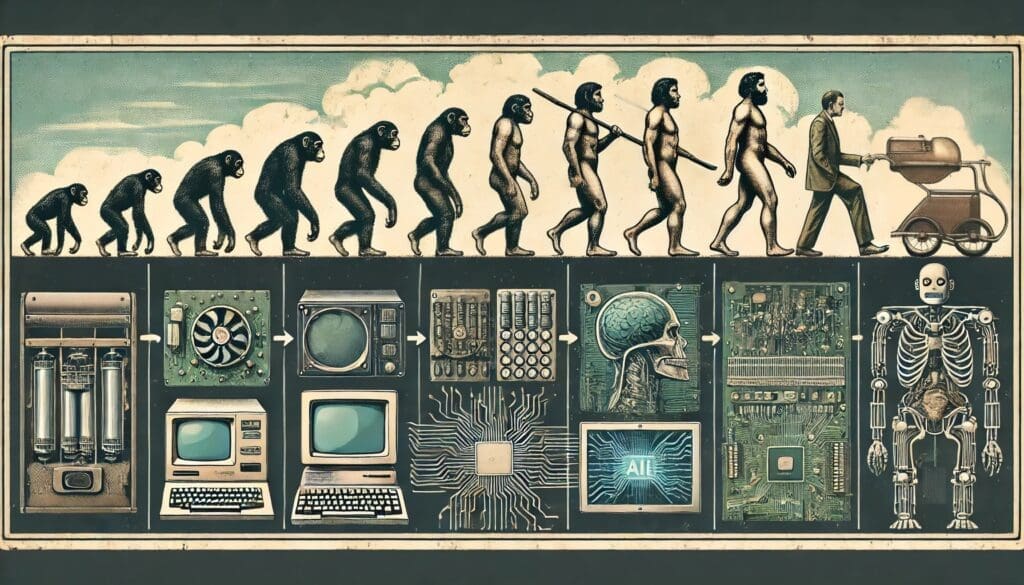This article by Fr Roger Mamani Choque, CM offers a reflection on the relationship between Artificial Intelligence (AI) and the Vincentian charism, addressed to members of the Church and in particular to those engaged in the Vincentian mission

Presentation
This article offers a personal reflection on the relationship between Artificial Intelligence (AI) and the Vincentian charism, addressed to members of the Church and especially to those engaged in the Vincentian mission. It is not a formal research, as no rigorous scientific methodology has been employed, but a contemplative and practical approach on how AI is inserted into our daily lives as Vincentian missionaries, members of the People of God.
AI, a technology that is already deeply embedded in various aspects of our daily lives, poses both opportunities and ethical and pastoral challenges. To understand its impact, we initially present an overview of AI: its origin, development, and how it influences people’s lives and the functioning of institutions and businesses. This review seeks to provide a context to facilitate reflection on our response to this emerging reality.
We then approach the mission of the Church from the perspective of St. Vincent de Paul, exploring how his charism can inspire our interaction with modern technology. St. Vincent, with his ability to respond creatively to the needs of his time, offers us a valuable framework for discerning and adapting to the challenges that AI presents in today’s context. Through his writings and legacy, we find guidelines for integrating AI into our mission, always with an ethical gaze and a focus on human dignity.
Finally, we call to remain open to the manifestations of God’s will in contemporary events. The age of AI demands of us a response that combines fidelity to our tradition with an innovative readiness to address new challenges. This reflection invites us to respond creatively and responsibly to the demands of society and the imperatives of our evangelising mission, ensuring that the use of technology is consistent with Gospel values and the Vincentian charism.
As we move forward in this technological age, it is crucial that Vincentians form ourselves integrally and reflect critically on the influence of AI on our life and mission. With a solid foundation in tradition and a commitment to innovation, we can use these tools in ways that promote justice, the common good and the salvation of souls, while always maintaining our vocation of service to the poorest and most vulnerable.

Artificial intelligence
According to the Royal Spanish Academy, artificial intelligence (AI) is the “scientific discipline that deals with creating computer programs that execute operations comparable to those performed by the human mind, such as learning or logical reasoning” (RAE, 2024). The term “artificial intelligence” was formally introduced at the Dartmouth convention in 1956, describing it as the science and engineering of creating intelligent machines, especially computer programs with advanced capabilities (Hernando et al., 2022).
AI stems from the first attempts to simulate and mechanise human thought processes, an idea that Turing had already anticipated in 1950. Since then, AI has evolved significantly from a conceptual theory to a technological reality with practical applications. During the 1990s, although AI was not as advanced as we know it today, it had laid the foundations for its development as a science.
In the 2000s, the progress of AI accelerated thanks to three key factors: the increase in learning capabilities, the massive accumulation of data, and the development of deep learning algorithms (Kelley, 2017). These advances allowed AI to overcome many of its initial limits and begin to integrate into our everyday lives.
Currently, AI plays a crucial role in the technological revolution, supporting innovations in areas such as robotics, nanotechnology, the Internet, 3D printing, quantum computing and autonomous vehicles (Hernando et al., 2022). According to UNESCO’s World Commission on the Ethics of Scientific Knowledge and Technology (2019), AI is defined by its ability to mimic certain functions of human intelligence, such as perception, learning, reasoning, problem solving, linguistic interaction and creative production.
In technical terms, AI comprises several branches and methodologies, among which the most important are:
- Machine Learning: A subfield of AI that focuses on the development of algorithms that allow machines to learn from data. This learning can be supervised (with labelled data) or unsupervised (without labelled data).
- Supervised learning: Involves training models with a labelled data set, where the algorithm learns to predict or classify new data based on the learned pattern.
- Unsupervised learning: Involves algorithms that analyse unlabelled data to discover hidden structures or clusters without the guidance of predefined answers.
- Deep Learning: Part of machine learning that uses deep neural networks to model complex patterns in big data. This approach has driven advances in image recognition, natural language processing, among others.
- Reinforcement Learning: A method where an agent learns to make decisions in a dynamic environment through trial and error, optimising its behaviour through rewards and punishments.
In addition to these approaches, AI includes technologies such as expert systems, robotic process automation, robotics, and natural language processing systems (UNIR, 2024). While AI does not replace human experts, it amplifies their capabilities by performing complex tasks that require intensive data processing and continuous learning.
It is important to remember that AI, while powerful, is designed for specific tasks and lacks general skills such as managing activities that require ethical or empathic judgments (Hernando et al., 2022). AI complements but does not replace the need for human intervention in many areas, highlighting its role as a tool that enhances our capabilities.
Artificial intelligence (AI) has evolved rapidly and, according to UNESCO (2021), has given rise to a number of advanced technologies that are increasingly offered as services. These technologies are integrating into various aspects of daily and professional life, transforming the way we interact with information, devices and each other. The following details how these technologies are shaping the current AI landscape:
- Natural Language Processing (NLP): NLP is a branch of AI that focuses on the interaction between computers and human language. This includes the ability to interpret, analyse and generate text automatically. PLN applications range from machine translation and summary generation to performing deep semantic analysis to understand complex contexts in texts.
- Speech recognition: This technology applies PLN to spoken language, allowing machines to understand and process the human voice. It is present in devices such as smartphones, AI personal assistants (such as Siri or Alexa), and chatbots that can perform tasks using voice commands. Its accuracy and usability have improved significantly thanks to advances in deep learning models.
- Image recognition and processing: This involves the use of AI to interpret and manipulate images. This technology includes applications for facial recognition, object identification, handwriting recognition, and image manipulation for a variety of purposes, from security to digital art. Autonomous vehicles also rely on this technology to analyse and react to their environment in real time.
- Automated agents: These include a wide range of automated systems, such as avatars in computer games, software bots (malicious or benign), virtual companions and intelligent robots. These agents can interact autonomously with users or other systems, providing responses and performing actions based on their programming and learning capabilities.
- Affect detection: This technology analyses and responds to human emotions by processing text, behaviour, and facial expressions. It is used in applications ranging from customer care to mental health monitoring, providing a more personalised and empathetic interaction based on the interpretation of feelings and emotions.
- Data mining for prediction: Uses advanced techniques to extract meaningful patterns from large data sets. Applications include medical diagnostics, weather forecasting, business projections, smart city management, financial predictions, and fraud detection. Data mining enables organisations to make informed decisions based on predictive analytics and trend modelling.
- Artificial creativity: This refers to systems capable of generating creative content such as photographs, music, artwork, and narratives. These systems use generative algorithms that can combine, transform and create new content, mimicking and sometimes surpassing human capabilities in certain areas of creativity.

